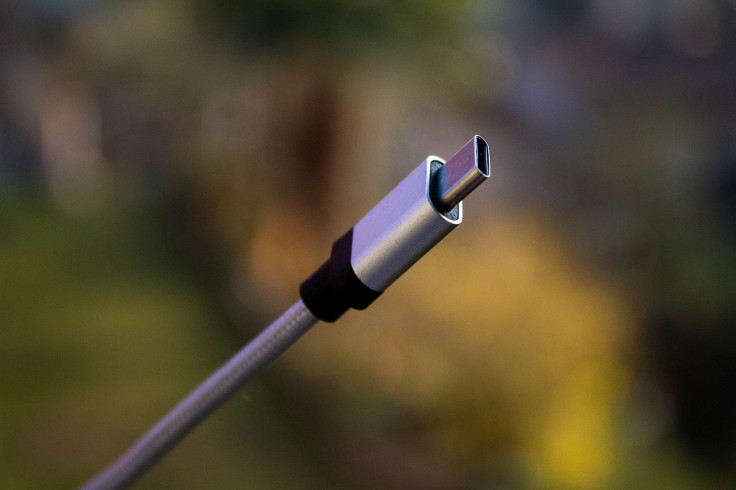Apple Stores In China Urge iPhone 15 Users To Avoid Using Android Cables, Here's Why
While both iPhones and Android devices now use USB-C, the iPhone 15 series may not charge as fast as any other Android products.

Apple stores in China are warning against using Android cables on the iPhone 15 series due to potential overheating. The iPhone 15 series comprises the standard iPhone 15, iPhone 15 Plus, iPhone 15 Pro and iPhone 15 Pro Max models.
These handsets boast an impressive array of features and bring major upgrades over their respective predecessors.
This still feels weird 😂
— Safwan AhmedMia (@SuperSaf) September 21, 2023
USB-C on the iPhone 15 Pro Max! pic.twitter.com/uwr9Tl4uKu
Much to the delight and relief of iPhone fans, the entire iPhone 15 lineup adopts a universal Type-C interface. The move aligns with the latest trend in Android phones, allowing users to charge various devices with a single cable.
As a result, Android-to-iPhone cross-platform battery sharing is now a reality. However, a recent report from Chinese portal CNMO suggests some Apple Stores are warning users against using Android charging cables with the new iPhone 15, claiming it might lead to overheating.
This could be Apple's sales strategy
An Apple-exclusive store in Foshan, Guangdong Province urged customers to avoid using Android Type-C cables to charge the iPhone 15. Reportedly, the store said there are differences in the pin arrangement of the interfaces.
Apparently, using an Android cable might lead to overheating due to the smaller gap between the single-row 9-pin and single-row 11-pin connectors. Interestingly, it looks like this advisory wasn't limited to a single store.
According to the report, multiple Apple-exclusive stores have issued similar warnings. However, critics suggest these warnings could be the company's attempt to encourage users to buy its official charging cables.
Every USB-C accessory the iPhone 15 Pro supports 🤌
— Apple Intro (@appleintro) September 24, 2023
It can now power SSDs, other phones, headphones and more! pic.twitter.com/uT1sH3VT78
It is worth noting that Apple's official charging cables carry steeper price tags compared to those from Android manufacturers. Now, this has sparked a debate about whether the company is genuinely warning users by citing the safety concerns.
Alternatively, this could be a strategic move to increase sales of Apple's proprietary accessories. Apple hasn't issued an official statement that clarifies its position on the use of Android charging cables with the iPhone 15 series.
Nevertheless, the situation raises concerns over the compatibility of charging cables. It will be interesting to see whether the Cupertino-based tech giant will provide clear guidance for consumer safety and prevent potential device damage.
Can you use an Android cable to charge an iPhone 15?
Android phones, which rely on USB-C cables, charge faster than iPhones. In fact, the iPhone 15 and 15 Plus charge at 20W or lower. The higher-end iPhone 15 Pro and 15 Pro Max can juice up a little faster (around 27 to 29W).
According to an earlier report, iPhone 15 owners who use Apple's MFi (Made for iPhone) licensed chargers and cables will be able to achieve the phone's fastest charging speeds. However, the European Commission has warned Apple against the move.
So, it may never be known whether Apple was genuinely considering limiting USB-C cables without Apple certification. In the meantime, it looks like an Android cable can be used to charge the current-generation iPhone models.
Why did iPhones switch to USB-C?
The iPhone 15 series is the first generation to come with a USB-C charging port. Until 2023, Apple refused to oust the Lightning port in favour of a more commonly used USB-C port. To those unaware, Lightning was introduced alongside the iPhone 5 in 2012.
The USB-C spec, on the other hand, came out in 2014. However, Apple continued to force its users to use separate cables to charge their iPhones. So, the burning question is what led to Apple finally switching to USB-C charging?
According to the folks at Android Authority, the company was making a profit by certifying Lightning accessories because firms were paying to access the booming iPhone market. Also, the report suggests Apple wasn't willing to spend the time and money needed to change its designs, production and supply chain.
Aside from this, Apple didn't want to switch to USB-C charging because it would end up adopting a format used by its rivals. A shared standard would make it easier for customers to jump ship.
In 2022, the European Union voted to make USB-C a mandatory standard for wired charging by the end of 2024. Apple could have released separate designs for Europe or simply abandoned that market, but instead decided to use USB-C ports across the new iPhone series.
© Copyright IBTimes 2024. All rights reserved.






